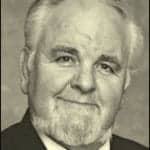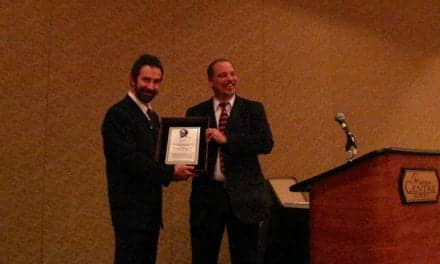Opinion | July 2016 Hearing Review
Like all the giants of audiology who blazed the trail before you, focus on audiological science for clinical excellence, career success, and our professional future

I was truly blessed that, for 6 years, I spent one day a week working with James Jerger, PhD, who taught me more about audiology and auditory behavior than I learned in my 3-year doctoral program. Jim had written 150 articles by the time I even started working with him in 1972, and many of those were, or would become, the foundation for much of the auditory progress that we have made. He has developed many tests over the years, from the SAL test to the SISI, to the STAT, the SSI-CCM, and SSI-ICM, as well as textbooks on impedance, audiology in America, and on the field of audiology itself.
Jim insisted that anyone who worked in the lab with him document everything so we could always go back and find the antecedent for any outcomes or behaviors we observed. He also taught us how to listen actively to the patient. That sounds like a small thing until you practice doing it. Then you realize just how difficult it is to listen with that kind of focused attention to the patient. I learned from Jim that the trick is to focus on what they say and what they don’t say. That’s the difference between active and passive listening.
Dr Jerger taught me how to correctly “mask,” and also the kind of signal to use in each kind of test that I wanted to perform. By defining for me the instances in which each masking signal could be used and the rules that applied, he helped me ensure that no patient was ever over-masked or under-protected. At the time it was a concept that no one else was teaching.
Another source of inspiration during my career was Charles “Chuck” Berlin, PhD, who taught me excellence in patient care. He has created multiple exams and central auditory tests, and written about the process of hearing. He was singularly responsible for the best program for teaching decibels ever written. If you have not read it, it would greatly benefit you professionally to do so.
Dr Berlin is one of the best auditory neuro-physiologists I ever met. He specialized in neuro-auditory central function, and taught me that if you truly want to understand the auditory behavior of a patient, you need to be able to mentally map—synapse by synapse—sound as it is processed through the entire auditory system. This skill allows the audiologist to tell a patient where the problem is on their “neural map.”
Dr Berlin fascinated me, and over the years I tried to attend as many of his lectures as I could. Through his lectures and teachings, I learned to approach my work by asking the question: “Am I doing this the best way I can, or am I doing this the way I was taught?” If the answer was “I’m doing it the best way that I can think of,” then I was likely doing it correctly. According to this approach, if you do things a certain way because it’s the way you were taught 10 to 20 years ago, then you are more than likely practicing the history of your profession. It is better for your patients, your career, and the future of the profession, to lean on the best available science and let it lead you toward creating new and improved solutions for each unique patient.
I met Richard H. Nodar, PhD, at a conference in the 1980s, and we hit it off immediately because we were close in age and shared a great deal of background—we had both been in the Marine Corps and had gone back to school after finishing our service. Rich demonstrated to me the kind of questioning characteristics that Jim Jerger and Chuck Berlin had shown me in the past. Rich approached each case with questions like “Suppose I…?” or “What if we…?” At the time, Rich was in charge of fitting hearing aids at the Cleveland Clinic, and had successfully fit CIC hearing aids on children, a fairly new technology in those days—especially for pediatric patients. This inspired me to begin fitting CICs and CROS hearing aids on my younger patients. Rich also taught me what to look for when I was testing children and, thanks to him, I went on to successfully test and fit hundreds of children with new hearing technology during my career.
Dr Nodar, like Drs Jerger and Berlin, took a scientific approach to his job by asking probing questions. Experts like Jerger, Berlin, and Nodar were inspiring because they were always thinking outside the box. They were always asking, “What is the patient trying to say to me?” Patients aren’t always able to clearly express in words what we need to understand about their hearing problems in order to help them. By asking ourselves “What does the patient mean? What is he trying to tell me?” we come closer to understanding how to help them hear what they want to hear, and achieve what they wish to achieve. The better we do this in order to properly fit hearing instruments to each patient, the less likely it is that their new aids end up in a drawer.
These three researcher/clinicians were trained by scientists on how to understand acoustics and decibels, and they approached their professional endeavors with science-driven thinking. By seeking to understand the difficulties experienced by their patients through scientific questioning, they were able to achieve great success. All three have a thorough knowledge of psychoacoustics, physical acoustics, and the physiology of the auditory system.
There is one more important shared trait in these audiology giants: they view each individual patient as a treasure hunt. They scientifically explore how the patient processes sound as an auditory being. All three think outside of the box. It is their demonstrable tendency to think beyond a traditional approach that makes them so effective and allows them to improve our profession. They do not limit themselves to the historical confines of any particular test procedure; they ask questions other people don’t ask, and think outside the traditional parameters the profession has set up. It’s not that they purposely or willfully violate those parameters, they just think in broader terms and have the confidence in science to tailor their solutions to the specific needs of a patient. And that is the critical approach to take in the delivery of excellent patient care.
It’s not a matter of telling every patient “Push the button when you hear the sound” or “Raise your hand when you perceive the sound,” it’s about thinking how the patient hears and how you can use that information. It’s about the psychoacoustics that are required to successfully enable the patient to get the most from his or her auditory experience.
And that’s how you define the difference between practicing the history of your profession and its future. That’s how you define thinking outside the box. It’s thinking about the best way to do something, even if you’ve never done it that way before. If you get the same information through a new method, or better information in less time (with all the patient protections built in), then you have stepped forward, and possibly, helped advance the future of the audiology profession. ?
Acknowledgment
This article is an excerpt from an upcoming book, Back to the Future…Again.
Jay B. McSpaden, PhD, is an audiologist and hearing instrument specialist who has retired from his many years in private practice, but continues to write about hearing healthcare. He is a long-time educator in the field and a member of the Hearing Review Editorial Advisory Board.
Correspondence to Dr McSpaden at: [email protected]
Original citation for this article: McSpaden JB. Letter to a New Generation of Audiologists. Hearing Review. 2016;23(7):36.?






